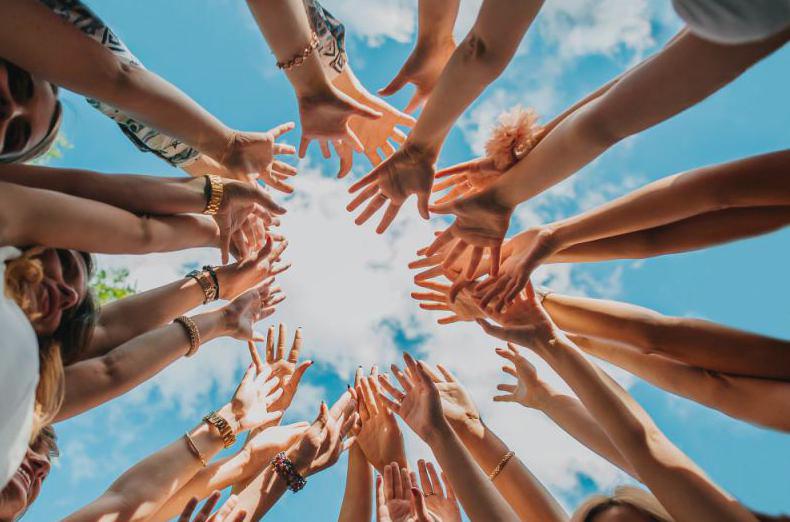
The role of the family in preventing violence against children
Safety and well-being of children are paramount concerns, the family emerges as a powerful force in the preven (...)
Read more
Violence, whether physical, emotional, or psychological, can have profound and lasting impacts on individuals and communities. To build a better future, it is essential to understand how to avoid violence and promote peaceful coexistence. This article delves into a comprehensive exploration of effective strategies and approaches, providing insights into fostering harmony and mitigating conflicts.
Before delving into strategies for violence prevention, it's imperative to comprehend the underlying factors that contribute to violence. Poverty, inequality, lack of access to education, and societal prejudices are among the primary drivers of violent behaviors. By addressing these root causes, we can lay the foundation for long-term violence prevention.
Education plays a pivotal role in shaping individuals' perspectives and attitudes. Integrating values of tolerance, empathy, and respect into educational curricula from an early age can mold future generations into peace-conscious citizens. Through comprehensive programs that emphasize conflict resolution and communication skills, students can learn to manage disagreements in nonviolent ways, setting the stage for a more harmonious society.
Effective communication is an essential tool for violence prevention. Encouraging open and respectful dialogue among individuals and communities can facilitate the resolution of misunderstandings and conflicts. Mediation techniques and active listening skills enable conflicting parties to express their grievances, ultimately leading to mutually agreeable solutions. By promoting the art of dialogue, societies can break down barriers and build bridges of understanding.
Empowering women and marginalized groups is a fundamental step towards violence prevention. Gender-based violence, discrimination, and exclusion are deeply interlinked with broader societal violence. By promoting gender equality and providing marginalized communities with equal opportunities, societies can reduce the disparities that often lead to resentment and hostility. Inclusive policies and programs that uplift these groups can pave the way for a more just and peaceful world.
Strong communities act as buffers against violence. When individuals feel a sense of belonging and responsibility toward their communities, they are less likely to engage in harmful behaviors. Encouraging community engagement through shared activities, cultural events, and collaborative projects fosters a sense of unity. In turn, this shared identity can discourage violence by reinforcing the idea that harming one another equates to harming oneself.
Conflicts are inevitable in any society, but violence is not the only way to resolve them. Teaching conflict resolution skills equips individuals with the tools to navigate disagreements constructively. Negotiation, empathy, and compromise are essential components of conflict resolution. Training individuals in these skills can help them address conflicts in a way that respects both their own needs and the needs of others, contributing to a more peaceful environment.
Governments play a crucial role in violence prevention through policy-making and legislation. Implementing strict regulations against hate speech, discrimination, and other forms of harmful behavior sets a clear tone for societal expectations. Furthermore, investing in social programs that address poverty, unemployment, and access to healthcare can significantly reduce the factors that contribute to violence.
Media, as a powerful influencer of public opinion, bears a responsibility in violence prevention. Promoting media literacy and responsible reporting can prevent the spread of misinformation and the glorification of violent acts. By showcasing stories of reconciliation, resilience, and cooperation, media can reshape narratives and inspire positive change.
Violence knows no borders, which is why international cooperation is essential for preventing it. Diplomatic efforts, collaboration between nations, and addressing transnational issues collectively can create a global environment that values peace over conflict. Initiatives that promote cultural exchange, understanding, and cooperation can bridge gaps and reduce the likelihood of violence arising from misunderstandings.
In the pursuit of a violence-free world, a multi-faceted approach is necessary. By addressing the root causes of violence, promoting education, encouraging open dialogue, empowering marginalized groups, strengthening communities, and implementing effective policies, societies can build a foundation for lasting peace. The collective effort to prevent violence, encompassing individuals, communities, governments, and the media, holds the potential to create a brighter, more harmonious future for generations to come.

Safety and well-being of children are paramount concerns, the family emerges as a powerful force in the preven (...)
Read more
In the digital age, where connectivity and communication thrive, a darker side has emerged - cyberbullying. Th (...)
Read more
In the gritty underbelly of urban life, street gangs have long captured the imagination and attention of socie (...)
Read more
The rise in various forms of violence has placed young individuals in vulnerable positions, necessitating proa (...)
Read more